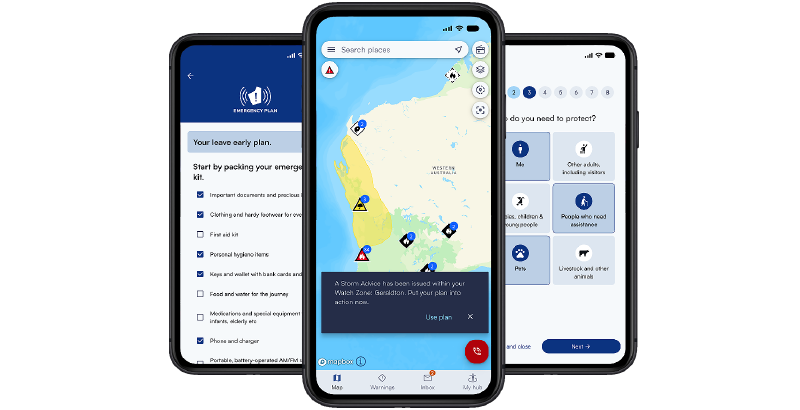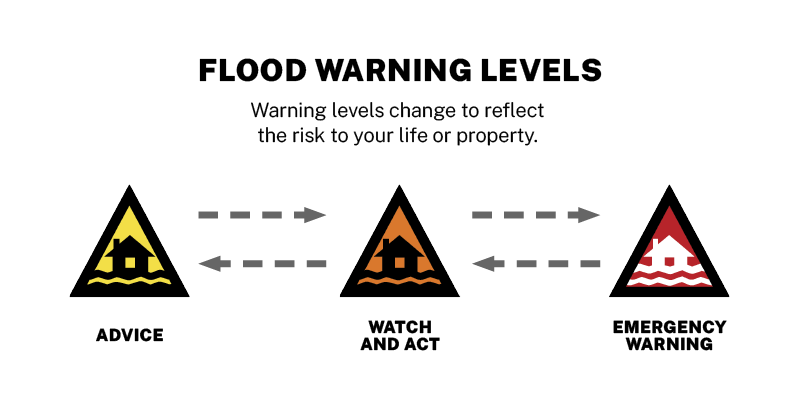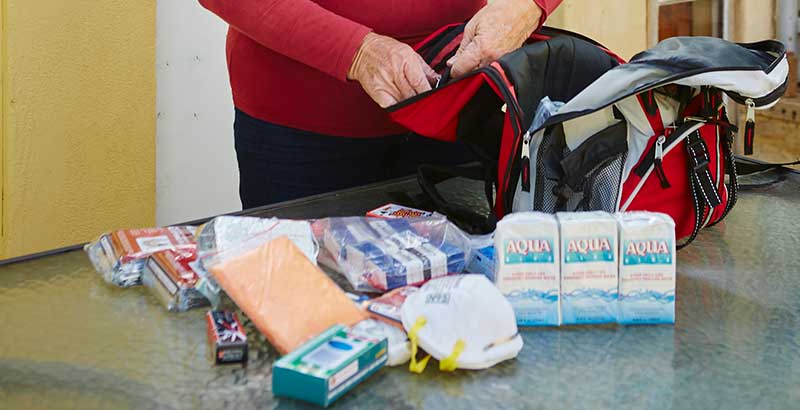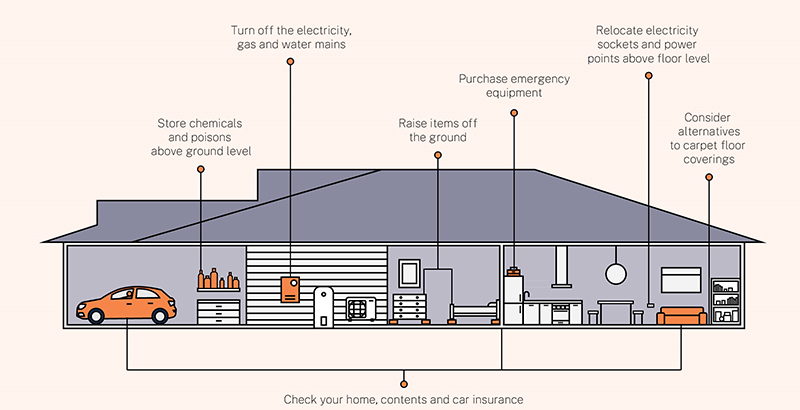Fire or life threatening emergencies: 000
Emergency Information: 13 3337
SES Emergency Assistance: 132 500

When a flood starts quickly there may not be much time to prepare yourself or your property. It’s important to create a personalised emergency plan before disaster strikes. You’ll have a better chance of reducing damage and injury if everyone knows what to do and your property is well maintained.
The emergency planning tool within Emergency WA allows you to prepare for a range of hazards including floods, bushfires, cyclones and storms.
If you link your plan to a watch zone in the app, you’ll receive instant notifications when a flood hits. The app will guide you through your plan, cutting out indecision when seconds matter.
Prepare for a flood now and keep yourself and your household safe.
Your flood plan should address the following:
Check in with family, friends and neighbours to make sure they have a plan too.
For more information, refer to the Flood Smart brochure.
If you have pets and animals, you need to plan what you’ll do with them during a flood.
Find out more about including pets and animals in your plan.
Did you know? Most household insurances policies do not provide flood cover. Do you know if your house insurance covers you for flood?
It doesn’t have to be raining in your area for a flood to impact you. You could be at risk even if you’ve never seen floodwaters near your home.
You should make a flood plan now and make sure everyone in your household knows what to do if there is flooding.
Watch our 1.20 minute video to learn important steps you can take to avoid injury or death during a flood. View transcript.
There are three warning levels which change to reflect the risk to your life or property before, during or after a flood. These are the same warning levels as bushfire, storm and cyclone.
After a flood, an Advice or Watch and Act will be issued depending on the hazards and risk still present. Only in circumstances where there is an imminent threat to lives and homes will a flood Emergency Warning be issued.

What to do:
If driving:
What to do:
If driving:
What to do:
If you are advised to leave:
If flooding is occurring and you are unable to leave:
Additional actions if it is safe to do so:
What to do:
If you are advised to leave:
If driving:
What to do:
If driving:
Your emergency kit must be kept in a waterproof plastic container or heavy-duty water-resistant bag. You may be without power, water and other essential services for several days after a flood.

When preparing your family and property for natural disasters, you also need to consider your pets and livestock.
Ensure that your pets are properly identified with a name tag or microchip or that you have a recent photo of them with you, and that stock registers for your livestock are current.
Find out more about pet and livestock welfare in an emergency by visiting the Department of Primary Industries and Regional Development website.
You can also ask your local government if there are pet or livestock welfare arrangements in place during an emergency.

The best way to protect your pet is to move them to a safer area in advance. This may mean taking them to relatives, friends, animal boarding facilities or to a temporary animal shelter or evacuation centre which accepts animals.
When relocating your pets make sure you supply make sure that you supply:
Find out more about caring for pets in a natural disaster here.
If you don't have a pre-arranged evacuation site for your animals, head to your local council evacuation location and request further information when you get there.
It is important to have a plan to care for livestock. Planning to leave early is the best way to ensure their safety.
When moving livestock, you should consider:
You can find out more about caring for livestock during an emergency here.
If you are unable to move your pets in advance and are unable to take them with you, take the following precautions to help keep them safe:
Trained assistance dogs
Trained and accredited guide and assistance dogs will be allowed to stay in emergency shelters with their owners. Those accepted will require appropriate evidence of registration, accreditation, and identification.

You should prepare your home and property for potential flooding.